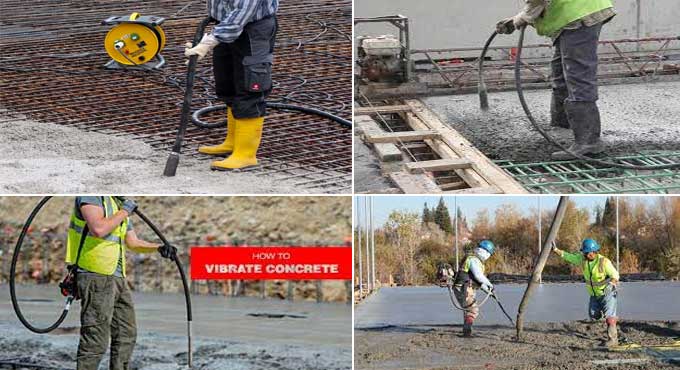
The Best Concrete Vibration Techniques

Proper Vibration Techniques in concrete are an important aspect of any construction-related industry. Concrete vibration and compaction are defined by Cement Concrete and Aggregates Australia (CCAA) as the process of expelling entrapped air from freshly laid concrete and packing aggregate particles together to improve the density of concrete.
Importance of Concrete Vibration
Vibrating concrete is important because it increases the density and strength of the concrete by removing air spaces and packing the aggregate particles together. A concrete building with tightly packed particles will be stronger and more durable.
Concrete that has not been vibrated is full of microscopic air pockets (honeycombing), resulting in a poor finish and a fragile structure.
Choosing the best vibration concrete techniques is very likely a thinking factor. The stability and durability of the structure depend on the techniques of concrete vibration.
A few best Concrete vibration techniques
1. Try not to vibrate the concrete for too long, as it breaks and separates the mixture. Also, do not under vibrate the concrete because air may still be trapped in the lower layers of the cement mixture. Resulting in a weak concrete structure that fractures easily with little pressure.
2. With an internal vibrator, the most frequent strategy is to progressively remove the vibrator at a rate of roughly 25mm inches per second. If bubbles continue to appear after the concrete vibrator has been removed, more vibration is required.
3. To avoid cold joints forming between concrete layers when a fresh layer of cement mixture is poured over them, use a vibrator to deeply penetrate the pour and mix in the previously poured layer with the newly put one.
4. When vibrating concrete, use only vertical movements to ensure a uniform combination of aggregate concrete. Horizontal motion might cause unequal distribution and increase the chance of the vibrator becoming tangled in the rebar or reinforcing steel.
5. Depending on the building?s structure or the size of the working area the appropriate type of concrete vibrator needs to be determined. For minor projects, a compact lightweight concrete vibrator may be more efficient.
6. By using any self-consolidation techniques, you can eliminate the vibration process of the concrete.
Types of Concrete Vibration
Three types of concrete vibrating are used globally, which are as follows:-
Internal Vibrators:
Immersion vibrators or internal vibrators, often known as "poker" or "needle" vibrators because of their tubular design, revolve with an eccentric weight that causes vibrations to ripple from the casing and across the concrete in which they are immersed.
The radius of the vibration is determined by the diameter of the casing, the instrument being used, and the frequency and amplitude settings. Immersion vibrations are currently available in a variety of action radiuses and are powered by fuel, electricity, or compressed air motors.
Surface Vibrators:
Surface vibrators, which are used to crush concrete slabs, roadways, and industrial floors, take a different technique to concrete vibration than immersion vibrators. This type of concrete vibrator exerts an external downward force on the concrete, making greater sections of flat concrete pours easier to work with.
However, it only penetrates to a certain depth, and the degree of compaction varies over the beam's breadth. Immersion vibrators are used in conjunction with surface vibrators, particularly for slabs larger than 200 millimeters, to guarantee that the particles are compressed thoroughly and evenly.
To learn more, watch the following video tutorial.
Video Source: Biance Huysamen
Formwork vibrators:
The vibrators are mounted to the outsides of the concrete forms in formwork vibration, which is extensively employed in precast concrete construction. The external form vibrators are frequently spaced 6 feet apart for larger pours.


